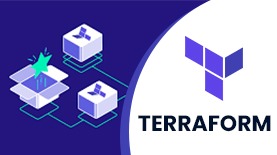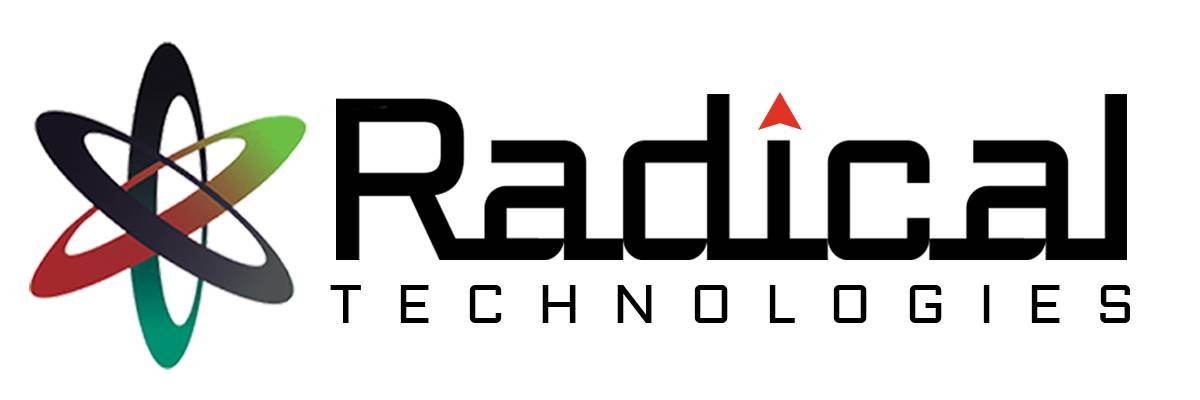- Home
- About Us
- Courses
- Combo Courses
- Programming Combo Courses
- Non Programming Combo Courses
- Linux & Cloud Combo
- Linux & DBA Combo
- AWS & Devops Combo
- Salesforce Combo
- Azure Admin Combo
- Azure Cloud & Azure Devops Combo
- Tableau Informatica Combo
- Power BI Informatica Combo
- Power BI & MSBI Combo
- Salesforce Manual Testing Combo
- Salesforce Tableau Combo
- Data Analytics Combo
- MCSA Azure Combo
- Powerplatform Combo
- ADF & Power BI Combo
- BA & Tableau Combo
- PG Diploma
- Online Schedule
- Offline schedule
- Job Openings
- Certifications
- Contact Us
TERRAFORM

Terraform is an open-source infrastructure as code (IaC) tool designed for automating and managing the provisioning and configuration of cloud resources and infrastructure. It enables users to define their infrastructure, including servers, networks, databases, and other resources, in a declarative configuration language. Terraform has become a fundamental tool in modern infrastructure management, enabling organizations to achieve infrastructure as code and DevOps practices, leading to more efficient, scalable, and reliable infrastructure deployments
852 Satisfied Learners
TERRAFORM TRAINING ONLINE/PUNE
Duration: 20hrs
Terraform is an open-source infrastructure as code (IaC) tool developed by HashiCorp. It allows you to define and manage your infrastructure in a declarative manner, treating your infrastructure as code. With Terraform, you can provision and manage resources on various cloud platforms, such as Amazon Web Services (AWS), Microsoft Azure, Google Cloud Platform (GCP), and others.
Why Radical Technologies
Here are some key concepts and features of Terraform:
- Infrastructure as Code (IaC): Terraform enables you to describe your desired infrastructure using a high-level configuration language. This code can be version-controlled, shared, and collaborated on like any other software code.
- Declarative Configuration: You define the desired state of your infrastructure using Terraform configuration files. Terraform then determines the actions necessary to reach and maintain that state, abstracting away the underlying implementation details.
- Providers: Terraform integrates with different cloud providers through provider plugins. Each provider offers a set of resources that can be managed using Terraform. Examples include AWS, Azure, GCP, and many others.
- Resources: Resources represent infrastructure components, such as virtual machines, networks, storage, and databases. You define these resources in your Terraform configuration, and Terraform ensures they are created, updated, or destroyed as necessary to achieve the desired state.
- State Management: Terraform keeps track of the state of your infrastructure. The state file records the metadata of resources managed by Terraform. It allows Terraform to plan and apply changes incrementally, ensuring that only necessary modifications are made.
- Execution Plans: Before making any changes to the infrastructure, Terraform generates an execution plan. The plan outlines what actions Terraform will take to achieve the desired state. This helps prevent unintended changes and allows for review before applying changes.
- Terraform CLI: Terraform provides a command-line interface (CLI) for initializing projects, planning changes, applying changes, and more. The CLI interacts with the Terraform configuration files and manages the state.
By utilizing Terraform, you can automate the provisioning, modification, and removal of your infrastructure resources, making it easier to manage and scale your cloud infrastructure in a consistent and reproducible manner.
Terraform Course Content :-
Introduction to Terraform:
Overview of Terraform, its architecture, and basic functionalities.
Terraform Configuration Language:
Understanding of the Terraform configuration language, including syntax, variables, and expressions.
Terraform Commands:
Understanding of Terraform commands, including the init, plan, apply, and destroy commands.
Terraform Providers:
Understanding of Terraform providers, including AWS, Azure, Google Cloud, and others.
Terraform Modules:
Understanding of Terraform modules, including how to create, use, and publish modules.
Terraform State:
Understanding of Terraform state, including how to manage and store state data.
Terraform Best Practices:
Understanding of Terraform best practices, including code organization, version control, and collaboration.
Advanced Terraform:
Understanding of advanced Terraform topics, including remote state management, workspaces, and advanced provider configuration.
Terraform Ecosystem:
Understanding of the Terraform ecosystem, including related tools and technologies such as Terragrunt, Packer, and Vault.
Note that the actual syllabus may vary depending on the specific training program and the level of detail covered.
Most Probable Interview Questions for Terraform
Interview Question No. 1 for Terraform : What is Terraform and how does it differ from other infrastructure-as-code tools like Ansible or Chef?
Interview Question No. 2 for Terraform : Explain the purpose of the Terraform state file and its importance in managing infrastructure.
Interview Question No. 3 for Terraform : How do you manage dependencies between resources in Terraform? Provide an example.
Interview Question No. 4 for Terraform : Describe the process of using Terraform modules. How do they help in managing infrastructure code?
Interview Question No. 5 for Terraform : What are Terraform providers and how do they facilitate infrastructure provisioning?
Interview Question No. 6 for Terraform : How can you use Terraform to manage infrastructure in a multi-cloud environment?
Interview Question No. 7 for Terraform : Explain the concept of “Terraform Workspaces” and their use cases.
Interview Question No. 8 for Terraform : What are some best practices for writing and managing Terraform configurations?
Interview Question No. 9 for Terraform : How do you handle sensitive data, such as passwords or API keys, in Terraform configurations?
Interview Question No. 10 for Terraform : Can you describe a scenario where you used Terraform to solve a complex infrastructure problem? What challenges did you face and how did you overcome them?
Learn Terraform – Course in Pune with Training, Certification & Guaranteed Job Placement Assistance!
At Radical Technologies, we pride ourselves on being the leading institute in Pune for Terraform Training and Certification. Our comprehensive curriculum is designed to cater to both beginners and advanced learners, offering a full spectrum of Terraform knowledge through our Terraform Full Course. Whether you’re seeking in-person classes or prefer the flexibility of Terraform Online Training, we provide the best Terraform Course options tailored to your needs.
Our Terraform Training Course is meticulously structured to ensure you gain hands-on experience with real-world applications. For those looking to advance their skills, our Advanced Terraform Training delves deeper into the intricacies of Terraform, making us the go-to destination for Terraform Advanced Training.
Radical Technologies also offers a Terraform Certification Course that prepares you thoroughly for the certification exam, ensuring you are well-equipped with the knowledge and skills required. Our Terraform Certification Training is recognized for its quality and effectiveness, making it the Best Terraform Training available.
We understand the importance of convenience and accessibility, which is why we offer Terraform Training Online and Terraform Online Courses. Our Terraform Course Online and Terraform Classes Near Me options provide the flexibility to learn from anywhere while maintaining the high standards of our in-person training.
For corporate clients, we offer tailored Terraform Corporate Training programs that align with your business goals and technical requirements. Our experienced instructors deliver training that enhances team capabilities and boosts productivity.
Join Radical Technologies for the Best Terraform Course experience. Our Terraform Online Course, Terraform Complete Course, and Terraform Certification Preparation programs are designed to equip you with the skills needed to excel in the field of infrastructure automation. Trust us for the best Terraform Classes and embark on a journey to professional excellence with our Complete Terraform Course offerings.
Find Terraform Course in other cities –
Online Batches Available for the Areas-
Ambegaon Budruk | Aundh | Baner | Bavdhan Khurd | Bavdhan Budruk | Balewadi | Shivajinagar | Bibvewadi | Bhugaon | Bhukum | Dhankawadi | Dhanori | Dhayari | Erandwane | Fursungi | Ghorpadi | Hadapsar | Hingne Khurd | Karve Nagar | Kalas | Katraj | Khadki | Kharadi | Kondhwa | Koregaon Park | Kothrud | Lohagaon | Manjri | Markal | Mohammed Wadi | Mundhwa | Nanded | Parvati (Parvati Hill) | Panmala | Pashan | Pirangut | Shivane | Sus | Undri | Vishrantwadi | Vitthalwadi | Vadgaon Khurd | Vadgaon Budruk | Vadgaon Sheri | Wagholi | Wanwadi | Warje | Yerwada | Akurdi | Bhosari | Chakan | Charholi Budruk | Chikhli | Chimbali | Chinchwad | Dapodi | Dehu Road | Dighi | Dudulgaon | Hinjawadi | Kalewadi | Kasarwadi | Maan | Moshi | Phugewadi | Pimple Gurav | Pimple Nilakh | Pimple Saudagar | Pimpri | Ravet | Rahatani | Sangvi | Talawade | Tathawade | Thergaon | Wakad


